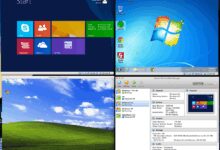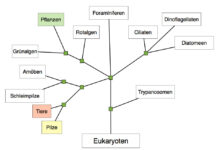System Notifications: 7 Powerful Secrets You Need to Know
Ever wondered how your phone quietly alerts you about updates, messages, or low battery? That’s the magic of system notifications—small but mighty tools keeping you informed behind the scenes.
What Are System Notifications and Why They Matter

System notifications are automated alerts generated by an operating system or software to inform users about events, status changes, or required actions. These messages appear on-screen, often in a designated area like the status bar or notification center, and serve as a bridge between the user and the inner workings of their device.
The Core Purpose of System Notifications
At their heart, system notifications exist to enhance user experience by delivering timely, relevant information without requiring active monitoring. They help users stay aware of background processes such as software updates, security alerts, connectivity issues, or hardware status (like low storage or battery).
- Inform users of critical system events
- Guide users through necessary actions (e.g., restarting after an update)
- Improve transparency between the system and the user
Without these alerts, users would have to manually check logs or settings to detect issues—making digital interactions far less intuitive.
How System Notifications Differ from App Notifications
While both appear in similar places, system notifications originate from the OS itself (like Windows, macOS, Android, or iOS), whereas app notifications come from third-party applications (like WhatsApp or Gmail). System alerts often carry higher priority and access deeper system layers.
“System notifications are the silent guardians of device health and performance.” — TechRadar, 2023
For example, a notification saying “Your device is running low on storage” comes from the OS, while “You have a new message” from Messenger is an app-level alert. Understanding this distinction helps users manage what they see and why.
The Evolution of System Notifications Over Time
System notifications have come a long way since the early days of computing. What started as simple blinking lights or beeps has evolved into rich, interactive messages with images, buttons, and even voice integration.
From Beeps to Banners: A Historical Overview
In the 1980s and 1990s, system feedback was minimal. Computers used sound cues or text-based prompts in command-line interfaces. The arrival of graphical user interfaces (GUIs) in systems like Mac OS and Windows 95 introduced visual alerts. These were basic pop-ups with limited interactivity.
By the 2000s, operating systems began standardizing notification areas—Windows added the system tray, and macOS introduced the menu bar status icons. These zones allowed users to see connectivity, volume, and battery status at a glance.
The real transformation came with smartphones. Apple’s iOS 5 (2011) launched the Notification Center, while Android refined its status bar alerts over multiple versions. These changes made notifications more organized, persistent, and user-controllable.
Modern Innovations in Notification Design
Today’s system notifications are smarter and more contextual. Features like priority ranking, do-not-disturb modes, and notification grouping help reduce clutter. Operating systems now use machine learning to predict which alerts are most relevant.
- iOS uses on-device intelligence to surface important notifications first
- Android’s notification channels let users customize alert types per app
- Windows 11 integrates notifications with widgets and Focus Assist
These advancements reflect a shift from mere alerting to intelligent communication. For more on Android’s evolution, check out Google’s official documentation on notifications.
How System Notifications Work Under the Hood
Beneath the simple pop-up lies a complex architecture involving system services, APIs, and user preferences. Understanding this mechanism reveals how seamless digital experiences are engineered.
The Technical Architecture Behind Alerts
When a system event occurs—say, a failed Wi-Fi connection—the OS kernel or a system service triggers a notification request. This request is passed through a notification manager, which evaluates priority, user settings, and current device state (e.g., silent mode).
The manager then formats the message and sends it to the notification renderer, which displays it on the screen. On mobile devices, this often involves the status bar and lock screen; on desktops, it might appear in the corner of the screen or action center.
This entire process happens in milliseconds, ensuring near-instant feedback. The architecture is modular, allowing developers and system engineers to customize behavior without disrupting core functionality.
Key Components in Notification Systems
Several components work together to deliver system notifications:
- Notification Manager: Central service that controls delivery and display
- Notification Queue: Holds pending alerts based on priority
- Rendering Engine: Handles visual presentation (banners, sounds, vibrations)
- User Preferences Database: Stores settings like mute times and alert types
On Linux systems, tools like notify-send and desktop environments such as GNOME or KDE manage these components. For deeper technical insight, visit the FreeDesktop notification specification.
“The notification system is one of the most frequently used, yet least noticed, parts of modern operating systems.” — Ars Technica
Types of System Notifications You Encounter Daily
Not all system notifications are created equal. They vary by function, urgency, and interaction level. Recognizing these types helps users respond appropriately and manage their digital environment.
Informational Notifications
These alerts provide updates without requiring action. Examples include:
- “Wi-Fi connected to Home Network”
- “System update installed successfully”
- “Battery charged to 100%”
They’re designed to reassure users that processes are working as expected. While non-critical, they build trust in system reliability.
Action-Oriented Notifications
These require user input. For instance:
- “Software update available—Download now?”
- “USB device detected—Open folder?”
- “Low disk space—Free up space?”
They often include buttons or quick actions, enabling users to respond without opening additional apps. This reduces friction and improves efficiency.
Critical and Security Alerts
The most urgent category includes warnings about:
- Security threats (e.g., “Virus detected”)
- Hardware failures (e.g., “Hard drive failing”)
- System crashes or boot errors
These notifications typically bypass quiet modes and may trigger sounds or repeated alerts until acknowledged. Their design prioritizes visibility and urgency to prevent user oversight.
Best Practices for Managing System Notifications
With the constant flow of alerts, managing system notifications effectively is crucial for productivity and mental well-being. Too many alerts lead to notification fatigue, while too few can cause missed critical updates.
Customizing Notification Settings
Modern operating systems offer granular control. Users can:
- Enable or disable specific notification types
- Set priority levels for different alerts
- Schedule quiet hours (e.g., during sleep or work)
On Windows, this is done via Settings > System > Notifications. On macOS, go to System Settings > Notifications. Android and iOS offer similar menus with per-app and system-level toggles.
Reducing Notification Overload
To avoid distraction:
- Turn off non-essential alerts (e.g., “Charging complete”)
- Use focus modes (like Do Not Disturb or Work Profile)
- Group similar notifications to reduce visual clutter
Studies show that excessive notifications can reduce focus by up to 40%. For tips on digital wellness, see Nir Eyal’s guide on managing digital distractions.
“The best notification is the one you don’t need to see because the system handled it silently.” — UX Collective
Security Risks and Privacy Concerns with System Notifications
While system notifications are essential, they can also be exploited. Malicious actors have found ways to misuse notification systems for phishing, spoofing, or data harvesting.
Notification Spoofing and Fake Alerts
Some malware disguises itself as legitimate system notifications. For example, a pop-up might say “Your system is infected! Click here to scan,” mimicking real antivirus alerts. These fake messages often lead to scam websites or prompt users to download harmful software.
To combat this, operating systems now use digital signatures and strict UI rules. Genuine system notifications come from trusted system processes, not third-party apps.
Data Leakage Through Notifications
Another concern is sensitive information being exposed on lock screens. A notification might display a private message preview, email content, or calendar details visible to anyone nearby.
- iOS and Android allow users to hide sensitive content on locked devices
- Enterprise policies can enforce stricter notification privacy
- Developers are encouraged to mark notifications as “sensitive” in code
For enterprise security guidelines, refer to Microsoft’s security documentation.
Future Trends in System Notifications
As technology evolves, so do system notifications. The next generation will be more predictive, contextual, and integrated with AI and ambient computing.
AI-Powered Smart Notifications
Future systems will use artificial intelligence to filter and prioritize alerts based on user behavior. For example:
- Delaying non-urgent alerts during meetings
- Summarizing multiple notifications into a single digest
- Predicting when a user is likely to act on an alert
Google’s Now on Tap and Apple’s Proactive Assistant are early examples of this trend. As AI models become more efficient, on-device processing will make these features faster and more private.
Voice and Haptic Integration
Notifications are no longer just visual. Voice assistants like Siri, Google Assistant, and Alexa can read out system alerts. Wearables use haptic feedback (vibrations) to signal events silently.
Future devices may use:
- Context-aware vibrations (different patterns for different alerts)
- Spatial audio cues (e.g., alert sounds coming from the left speaker for system events)
- Smart glasses displaying subtle visual cues in the periphery
This multimodal approach ensures users stay informed across environments—especially useful for accessibility and hands-free scenarios.
System Notifications Across Different Operating Systems
Each major OS handles system notifications differently, reflecting their design philosophies and user bases. Understanding these differences helps users optimize their experience.
Windows: Action Center and Focus Assist
Windows 10 and 11 use the Action Center to display system notifications. Key features include:
- Quick actions (e.g., Wi-Fi, Bluetooth toggle)
- Focus Assist to block distractions during work
- Integration with Microsoft Edge and Office apps
System alerts for updates, driver issues, and security are prominently featured. Administrators can manage notifications via Group Policy in enterprise environments.
macOS: Unified Notification Center
macOS offers a clean, minimalist notification system. Alerts appear in the top-right corner and are stored in the Notification Center. Features include:
- Notification grouping by app
- Time-sensitive alerts that bypass focus modes
- Integration with iMessage, Mail, and Calendar
System notifications for disk space, software updates, and printer status are handled seamlessly. For developers, Apple provides the UserNotifications framework.
Android and iOS: Mobile-Centric Design
Both Android and iOS treat system notifications as core UX elements. Android’s strength lies in customization—users can create notification channels, set importance levels, and control sound/vibration per category.
iOS emphasizes simplicity and privacy. Notifications are delivered with consistent styling, and users can choose to have alerts announced by Siri or hidden on the lock screen.
For comparison, see Android’s version history and Apple’s HIG on notifications.
What are system notifications?
System notifications are automated alerts generated by an operating system to inform users about events like updates, errors, or hardware status. They differ from app notifications by originating from the OS itself.
How can I disable system notifications?
You can manage them through your device’s settings: on Windows, go to System > Notifications; on macOS, use System Settings > Notifications; on Android and iOS, adjust settings in the respective notification menus.
Are system notifications a security risk?
While legitimate alerts are safe, fake or spoofed notifications can be used in phishing attacks. Always verify the source and avoid clicking on suspicious pop-ups.
Can AI improve system notifications?
Yes. AI can prioritize alerts, summarize messages, and deliver them at optimal times, reducing distraction and improving relevance.
Do system notifications consume battery?
Individually, they use minimal power. However, frequent alerts—especially with sound or vibration—can impact battery life over time, particularly on mobile devices.
System notifications are more than just pop-ups—they’re a vital communication layer between users and their devices. From informing about updates to warning of security threats, they play a crucial role in usability, safety, and efficiency. As technology advances, these alerts will become smarter, more personalized, and seamlessly integrated into our digital lives. By understanding how they work and how to manage them, users can stay informed without being overwhelmed.
Further Reading:









